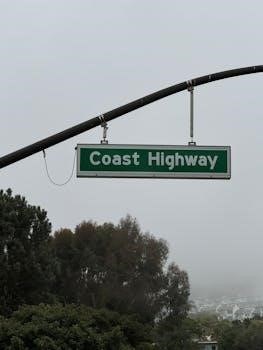Navigating the digital landscape requires a robust approach to traffic generation. With 61% of marketers citing it as a top challenge, a comprehensive guide is essential. Discover proven strategies to boost your website’s traffic, including free and paid methods. Focus on converting visitors and increasing ROI!
Understanding the Basics of Traffic Generation
Traffic generation is fundamental to online success, driving brand awareness, engagement, and conversions. It involves employing strategies like SEO, social media, and content marketing. Traditionally, the focus was on maximizing traffic volume. Today, the emphasis shifts to attracting relevant visitors and converting them into loyal customers. This involves a comprehensive understanding of free versus paid traffic sources.
Free traffic, derived from SEO, guest posting, and social media, requires consistent effort and patience. Paid traffic options, such as PPC advertising, offer immediate results but demand investment. Regardless of the method, time or money is always a factor. A balanced approach combining both free and paid strategies often yields the best outcome.
Understanding the nuances of traffic generation empowers businesses to optimize their online presence, reach their target audience, and achieve sustainable growth. By focusing on relevant traffic and conversion optimization, businesses can maximize their return on investment and build a resilient online presence. Testing, measuring, and analyzing are crucial to refining your traffic generation strategy.
Content Creation as a Cornerstone for Traffic
Content is king, and without it, attracting website traffic becomes nearly impossible. A well-crafted content strategy is the backbone of any successful traffic generation effort. Your website’s ability to attract visitors heavily relies on producing valuable and engaging content.

Content marketing positions your business to be found online by your target market. A blog serves as a central hub, attracting traffic from search engines and providing opportunities to repurpose content across various channels. This strategy taps into vast third-party user bases, building audiences that can be directed back to your website.

Content creation offers a multitude of possibilities. High-quality blog posts, articles, videos, and infographics serve as magnets, drawing in potential customers. Regularly updated content signals to search engines that your website is active and relevant, boosting your search rankings. Ultimately, content creation establishes your brand as an authority, fostering trust and driving sustainable traffic growth. By providing value, you create a loyal audience.
SEO Strategies for Sustainable Traffic
Search Engine Optimization (SEO) stands as a cornerstone for achieving sustainable website traffic. Winning top spots in organic search ensures a consistent flow of relevant visitors to your site. Solid SEO strategies are essential for long-term success, unlocking organic traffic, increasing brand awareness, and improving conversions without relying solely on paid advertising.

SEO is a long-term game, requiring patience and persistence. Unlike paid advertising, SEO provides lasting results, establishing your website as an authority in your niche. By optimizing your website for search engines, you make it easier for potential customers to find you. This involves keyword research, on-page optimization, technical SEO, and content creation.
Effective SEO strategies include optimizing your website’s structure, improving page speed, and creating high-quality, keyword-rich content. Focus on providing valuable information that satisfies user intent. Monitor your website’s performance using analytics tools, making adjustments as needed to improve your search rankings and drive sustainable traffic growth. Remember, SEO is an ongoing process.
Social Media Marketing and Promotion
Social media marketing is a powerful tool for driving traffic to your website. Promote your blog posts and other content on social media platforms to generate traffic and increase your reach. The more traffic your content generates, the higher it will rank in search engines, creating a virtuous cycle of visibility and engagement.
Leverage platforms like Facebook, Twitter, Instagram, and LinkedIn to share valuable content, engage with your audience, and build a community around your brand. Share useful content and resources, making it easier for potential customers to locate you. Don’t just post and run; actively participate in conversations, respond to comments, and foster meaningful interactions.
Consider joining relevant Facebook groups to connect with potential customers and drive traffic to your website. Building relationships with group owners can open doors to promotional opportunities. Repurpose your content for various social media channels, tapping into huge third-party user bases and building powerful audiences to filter back to your website. Remember, social media is about building relationships.
Email Marketing for Traffic Generation
Email marketing remains a highly effective strategy for driving targeted traffic to your website. By building an email list of interested subscribers, you can consistently deliver valuable content, promotions, and updates directly to their inboxes, encouraging them to visit your site.
Promote your blog posts and other website content in your email newsletters to generate traffic. The more traffic your content generates, the higher it will rank in search engines. Segment your email list based on subscriber interests and behaviors to personalize your messaging and increase engagement.
Craft compelling subject lines that entice recipients to open your emails. Include clear calls to action that encourage subscribers to click through to your website. Track your email marketing metrics, such as open rates, click-through rates, and conversion rates, to optimize your campaigns and improve your results. Email marketing, when done right, can be a reliable traffic source.
Leveraging Online Communities and Forums
Online communities and forums offer a valuable avenue for driving targeted traffic to your website. By actively participating in relevant communities, you can establish yourself as an authority in your niche, build relationships with potential customers, and drive traffic back to your site.
Identify online communities and forums that are relevant to your target audience. Engage in discussions, answer questions, and offer helpful advice. Share your expertise and insights to build trust and credibility within the community. Include links to your website in your forum signature and in relevant posts.
However, be mindful of the community’s rules and guidelines. Avoid spamming or self-promotion. Focus on providing value to the community and building genuine relationships. By becoming an active and respected member of the community, you can effectively drive targeted traffic to your website and generate leads.
Backlink Building for Authority and Traffic

Backlink building is a crucial aspect of search engine optimization (SEO) and a powerful strategy for driving both authority and traffic to your website. Backlinks, or inbound links from other websites, serve as votes of confidence for search engines, indicating that your content is valuable and trustworthy.
A strong backlink profile can significantly improve your website’s search engine rankings, leading to increased organic traffic. Focus on acquiring high-quality backlinks from authoritative websites in your niche. Guest blogging, broken link building, and creating valuable, shareable content are effective strategies for earning backlinks.
Remember, the quality of backlinks is more important than the quantity. A few backlinks from reputable websites can have a greater impact than numerous backlinks from low-quality or spammy sites. Monitor your backlink profile regularly to identify and disavow any harmful links that could negatively affect your website’s ranking. A strategic backlink building campaign will boost authority and traffic.
Paid Advertising Options
Paid advertising offers a direct and often immediate method to generate traffic to your website. Unlike organic strategies that require time and consistent effort, paid advertising allows you to target specific audiences and drive qualified traffic to your landing pages quickly. Several platforms offer paid advertising options, each with its unique strengths and targeting capabilities.
Google Ads is a popular choice for search engine marketing (SEM), enabling you to display ads on Google’s search results pages based on relevant keywords. Social media platforms like Facebook, Instagram, and LinkedIn provide powerful targeting options based on demographics, interests, and behaviors, allowing you to reach specific segments of your audience.
Consider exploring display advertising, which involves placing visual ads on various websites across the internet. Remember to carefully define your target audience, set a budget, and track your results to optimize your campaigns and maximize your return on investment. Paid advertising offers immediate visibility and targeted reach.
Analyzing and Optimizing Traffic Generation Efforts
Once you’ve implemented various traffic generation strategies, it’s crucial to analyze their performance and optimize your efforts for maximum impact. Data-driven insights are essential for understanding what’s working and what’s not, allowing you to refine your approach and allocate resources effectively. Begin by tracking key metrics such as website traffic, bounce rate, conversion rates, and cost per acquisition.
Utilize analytics tools like Google Analytics to gain a comprehensive view of your website’s performance, identifying traffic sources, user behavior, and engagement levels. Pay close attention to which channels are driving the most qualified traffic and generating the highest conversion rates. Conduct A/B testing on your landing pages, ad copy, and email campaigns to identify elements that resonate with your audience and improve your conversion rates.
Regularly review your data and make adjustments to your strategies based on the insights you’ve gathered. This iterative process of analysis and optimization is key to maximizing the effectiveness of your traffic generation efforts and achieving your desired results.
Diversifying Traffic Sources
Relying solely on one or two traffic sources can be risky, as changes in algorithms or platform policies can significantly impact your website’s traffic. Diversifying your traffic sources ensures a more stable and sustainable flow of visitors, reducing your dependence on any single channel. Explore a variety of traffic generation methods, including organic search, social media, email marketing, paid advertising, and referral programs.
Invest time and resources in building a presence on multiple social media platforms, tailoring your content to each platform’s audience and format. Implement an email marketing strategy to nurture leads and drive repeat traffic to your website. Consider running paid advertising campaigns on platforms like Google Ads and social media to reach a wider audience and generate targeted traffic.
Additionally, explore opportunities for guest blogging, influencer marketing, and partnerships with other businesses to tap into new audiences and drive referral traffic. By diversifying your traffic sources, you’ll create a more resilient online presence and mitigate the risk of losing traffic due to changes in any single channel.
